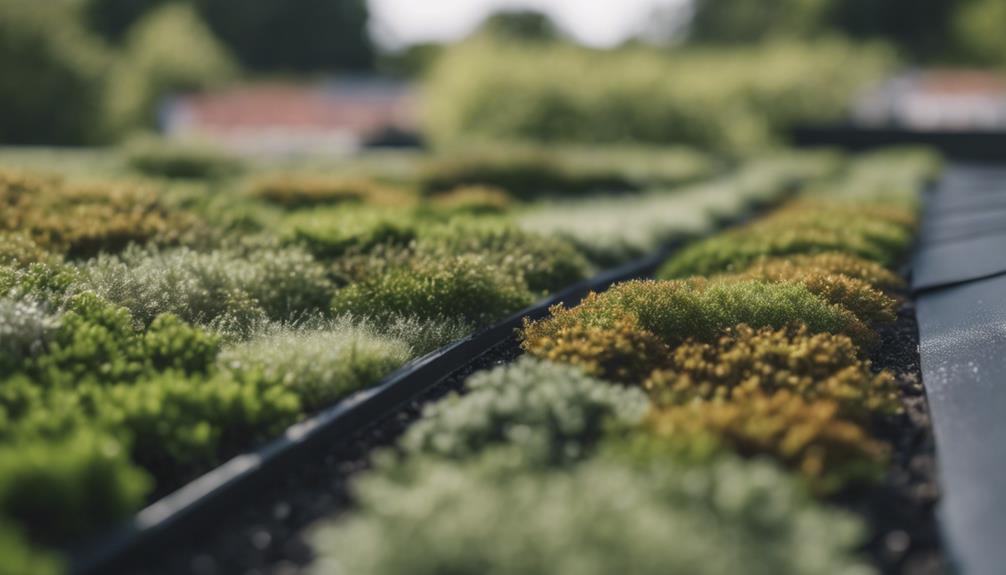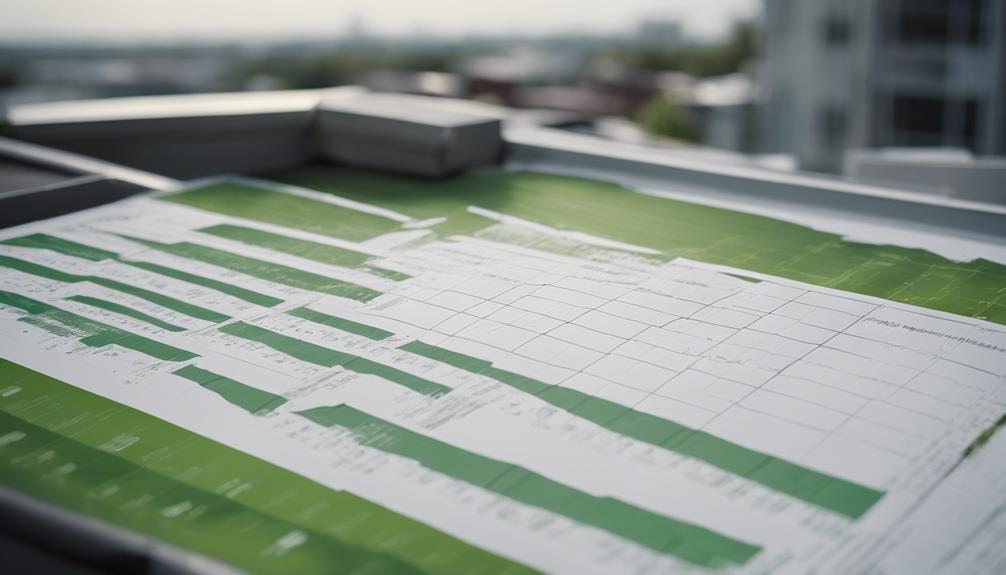What Are the Cost Benefits of Green Roof Installation?
Solve the puzzle of eco-friendly roofing costs to unveil surprising benefits that make it a smart choice - discover more insights below.
Green roofs serve as a waterproof membrane for your homes, they lower energy costs, and increase roof longevity. When considering the implementation of eco-friendly roofing systems, a thorough cost analysis becomes imperative.
The financial implications associated with this sustainable alternative to traditional roofing methods require a detailed examination. From initial material expenses to long-term maintenance and energy savings, the complexities of cost allocation in eco-friendly roofing projects necessitate a discerning eye.
By delving into the nuances of cost breakdowns, one can uncover the hidden value propositions that make eco-friendly roofing a compelling choice for environmentally conscious individuals and businesses alike.
What Is the Cost of Installing a Green Roof?
The typical expense for installing a green roof falls within the range of €15 to €50 per square foot, which translates to approximately €160 to €540 per square meter. This price range can vary based on several factors, including the type of green roof system being installed, the complexity of the project, the materials used, and the specific requirements of the building.
Materials form a significant portion of the cost breakdown. The type of vegetation, drainage layers, waterproofing membranes, and insulation materials used in the green roof construction impact the overall expenses. Additionally, the quality and source of these materials play an important role in determining the total cost.
Labour costs are another essential component to consider. Skilled labour is required for the successful installation of a green roof system. The expertise needed for handling various materials, ensuring proper drainage, and maintaining the roof’s integrity adds to the overall expenses.
Maintenance costs are also an important consideration. The annual costs for maintaining a green roof generally range from €0.75 to €1.50 per square foot (€8 to €16 per square meter). However, these expenses can fluctuate depending on several factors, including the specific type of green roof and the level of care it requires.
Structural analysis expenses, which involve evaluating the building’s ability to support the additional weight of the green roof, are important for a successful installation. Lastly, additional features such as irrigation systems or solar panels contribute to the overall cost of implementing a green roofing system.
How Does the Cost-Benefit Analysis of Green Roofing Impact Long-Term Savings?
In evaluating the cost-benefit of green roofing systems, a thorough analysis is essential to determine the long-term financial implications and environmental advantages associated with their implementation. Green roofs offer numerous benefits that can translate into cost savings and environmental stewardship over time. Below is a table outlining some key cost-benefit factors to contemplate when contemplating the installation of a green roofing system:
| Cost-Benefit Factor | Description |
|---|---|
| Energy Savings | Green roofs provide natural insulation, reducing heating and cooling costs. |
| Stormwater Management | They absorb rainwater, reducing runoff and the burden on drainage systems. |
| Air Quality Improvement | Green roofs filter pollutants and CO2 from the air, promoting cleaner urban environments. |
| Extended Roof Lifespan | The protective layer of vegetation can shield the roof membrane, extending its overall lifespan. |
What Factors Influence the Material Expenses for Green Roofing?

Considering the financial aspects of green roofing systems, a key component to assess is the breakdown of material expenses involved in their installation and maintenance. Green roofing materials can vary in cost depending on factors such as the type of system, the quality of materials, and the supplier. Here are some key material expenses to ponder:
- Vegetation Layer: This includes the vegetation, soil, and any additional planting materials required for the green roof.
- Waterproofing Membrane: An essential component to prevent water leakage into the building structure.
- Drainage System: Necessary for proper water flow and to prevent water accumulation on the roof.
- Insulation Materials: These help regulate temperature and reduce energy costs within the building.
Careful consideration of these material expenses is essential for accurately estimating the total cost of implementing and maintaining a green roof system. By understanding these costs upfront, stakeholders can make informed decisions regarding the financial feasibility and long-term benefits of green roofing solutions.
What Factors Should You Consider When Budgeting for Green Roofing?

Maximizing the value of green roofing through strategic budgeting entails careful consideration of cost-effective measures and long-term sustainability goals. The following essential steps can be used while budgeting for green roofing:
- Life Cycle Cost Analysis: Conduct a thorough analysis comparing the initial costs of green roofing with the long-term savings it can provide in terms of energy efficiency, reduced maintenance, and extended roof lifespan.
- Selecting the Right Plants: Choose plant species that are not only aesthetically pleasing but also require low maintenance and are well-suited to the local climate, reducing the need for irrigation and upkeep.
- Optimizing Insulation: Enhance the insulation properties of the green roof to improve energy efficiency within the building, leading to reduced heating and cooling costs over time.
- Regular Maintenance Plans: Develop a proactive maintenance schedule to ensure the green roof remains healthy and functions optimally, preventing costly repairs and maximizing its lifespan.
Frequently Asked Questions
How Do Green Roofs Affect Property Resale Value?
Green roofs positively influence property resale value through enhanced aesthetics, energy efficiency, stormwater management, and extended roof lifespan. Research shows that buyers are willing to pay a premium for properties with green roofs due to these benefits.
Are There Any Tax Incentives or Rebates Available for Installing a Green Roof?
Tax incentives and rebates for green roofs vary by location. In many jurisdictions, there are tax credits, deductions, or grants available for green roof installations. Consult with local authorities, energy agencies, or green building organizations for specific details.
Do Green Roofs Require Special Maintenance Compared to Traditional Roofs?
Green roofs require specialized maintenance due to their unique components like vegetation and drainage systems. Regular inspections, irrigation, weeding, and pruning are necessary to guarantee peak performance and longevity, contrasting with the simpler maintenance needs of traditional roofs.
Are There Any Potential Cost Savings Associated With Green Roofs in Terms of Energy Efficiency?
Green roofs offer potential cost savings through enhanced energy efficiency. They reduce heat absorption, lowering cooling costs in buildings. Additionally, they can extend roof lifespan, decreasing maintenance expenses in the long term.
How Long Does It Typically Take for a Green Roof to Pay for Itself in Terms of Energy Savings and Other Benefits?
Typically, a green roof pays for itself in energy savings and benefits within 6-10 years. Factors influencing this timeframe include initial investment, energy costs, climate, maintenance, and the specific design and materials used.